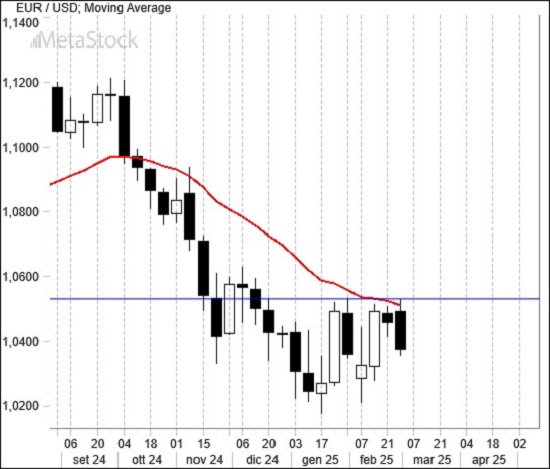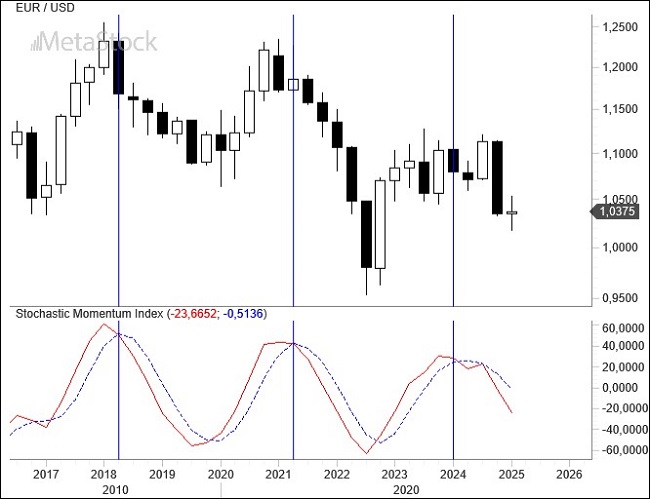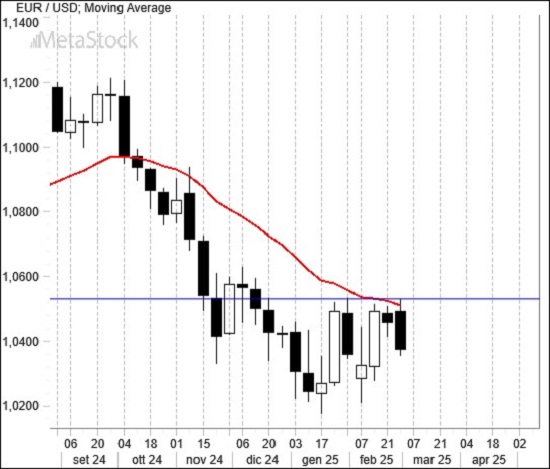- Trump announces new tariffs against Europe, but not only that—he humiliates Ukrainian leader Zelensky in a live broadcast, in what was supposed to be the decisive meeting for a truce with Russia. Meanwhile, consumer confidence in the U.S. drops, and interest rate curves flatten, repeating a familiar pattern that could signal an economic slowdown ahead.
- Europe is theoretically harmed by the geopolitical context and the trade war, but the markets reward it—both equity and currency markets remain resilient, believing in the easing of budget constraints.
- EUR/USD continues to struggle against the 1.05 resistance without success, in a context where devaluation appears to be a tool that the Trump administration could use to offset the trade deficit. However, once again, fear leads markets back to the dollar.
Trump’s Economic Offensiveand Market Reactions
Trump returns to his attack on Europe, announcing a 25% tariff on cars, but not just against the EU, which he perceives as having been created to deceive the United States. The president’s incredible narrative seems to have been missed by a market that, since his inauguration, has preferred European stocks (and the euro) to those of the U.S.
Copper also seems to be in the crosshairs, with export nations like Chile, Mexico, and Canada now at risk of tariffs on the valuable commodity.
Another key market development this week was Elon Musk’s strong stance on necessary public spending cuts to avoid a debt default. Musk himself has labeled shorting U.S. bonds as a foolish strategy that doesn’t acknowledge the work put in by the new administration. In this case, the effects on yields are evident, as ten-year bond rates have quickly fallen from 4.8% to 4.2%.
Finally, there is the geopolitical situation. Peace between Ukraine and Russia seems to be a primary goal for Trump, who, after initial approaches with Putin, tried to get closer to the Ukrainian leader. The live televised confrontation has now put all negotiations on hold, outraging European leaders at the treatment of Zelensky.
The approval of new customs barriers now shifts attention to the Federal Reserve, which will have to contend with the effects of imported inflation. This scenario is already creating a flattening of the yield curve, with long-term rates moving closer to short-term rates, signaling a potential slowdown in growth, but presenting a challenge for a central bank still unable to bring inflation back to a stable 2%. This could now risk reigniting inflationary pressures.
However, inflation may find some cooling support in consumer demand. Consumer confidence has fallen below 100 points in the usual FED survey, which could foreshadow a drop in domestic demand due to new tariffs.
Technical Analysis: EUR/USD Struggles at Resistance with Bearish Outlook
The EUR/USD exchange rate is currently in a highly technical phase, with continued attempts to break the crucial 1.05 resistance level.
As seen on the chart, not only do we find a series of highs at this level, which likely hide numerous stop-loss orders for short positions, but also market barriers from the options market and a 20-week moving average that, as early as November 2024, contained the euro’s strength, initiating a sharp decline in the single European currency.

Despite this renewed vitality of the euro, long-term charts seem to deny the possibility that the euro could push much beyond certain levels, which we might identify around 1.08/1.10.
The quarterly chart indicates that the stochastic indicator is still in a bearish position, with a signal that would only be negated in the case of an oversold condition, accompanied by a bottom-up crossover of the signal line. Clearly, we are still far from this pattern.



Leave a Reply
You must be logged in to post a comment.